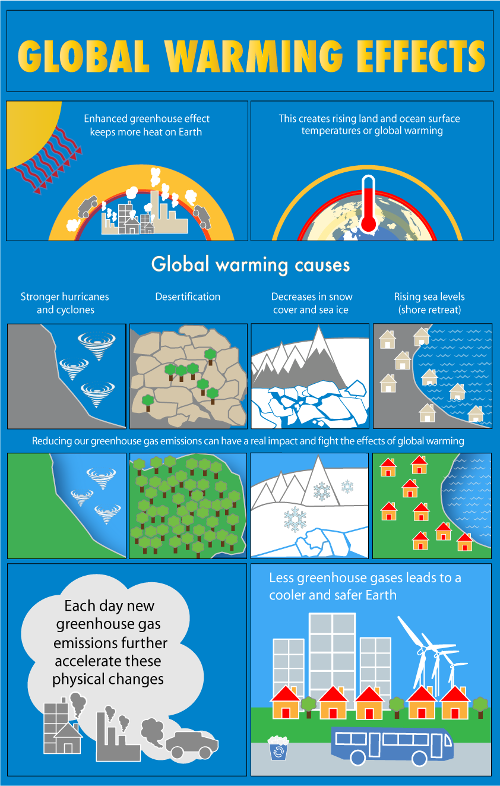Share
Global warming is damaging the Earth's climate as well as the physical environment. One of the most visible effects of global warming can be seen in the Arctic as glaciers, permafrost and sea ice are melting rapidly. Global warming is harming the environment in several ways including:
- Desertification
- Increased melting of snow and ice
- Sea level rise
- Stronger hurricanes and cyclones
Global warming is the current increase in temperature of the Earth's surface (both land and water) as well as it's atmosphere. Average temperatures around the world have risen by 0.75°C (1.4°F) over the last 100 years about two thirds of this increase has occurred since 1975. In the past, when the Earth experienced increases in temperature it was the result of natural causes but today it is being caused by the accumulation of greenhouse gases in the atmosphere produced by human activities.
Global warming is affecting many places around the world. It is accelerating the melting of ice sheets, permafrost and glaciers which is causing average sea levels to rise. It is also changing precipitation and weather patterns in many different places, making some places dryer, with more intense periods of drought and at the same time making other places wetter, with stronger storms and increased flooding. These changes have affected both nature as well as human society and will continue to have increasingly worse effects if greenhouse gas emissions continue to grow at the same pace as today.
Feel free to this infographic as a poster or graphic to spread the word!
Share
You will save the Earth by sharing and/or tweeting (corny right?)

